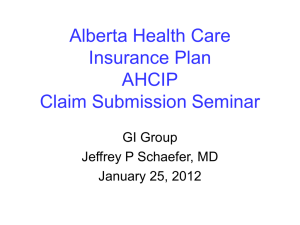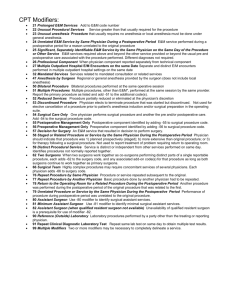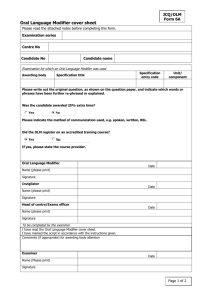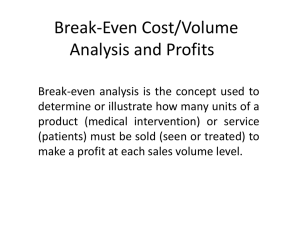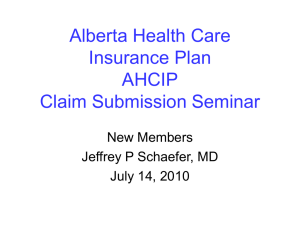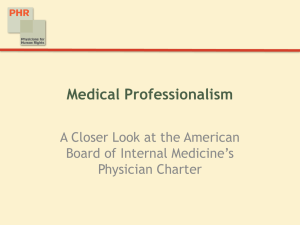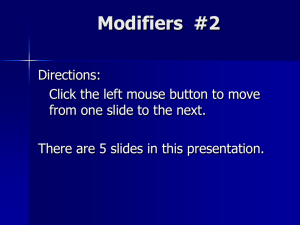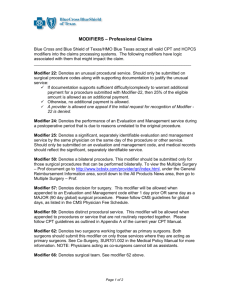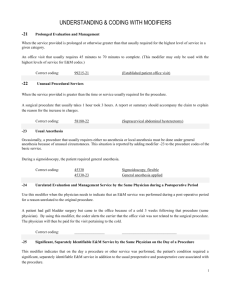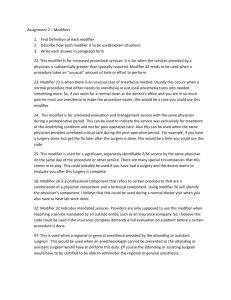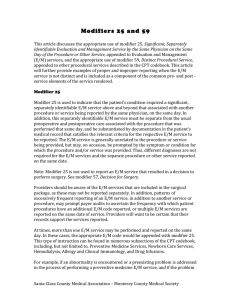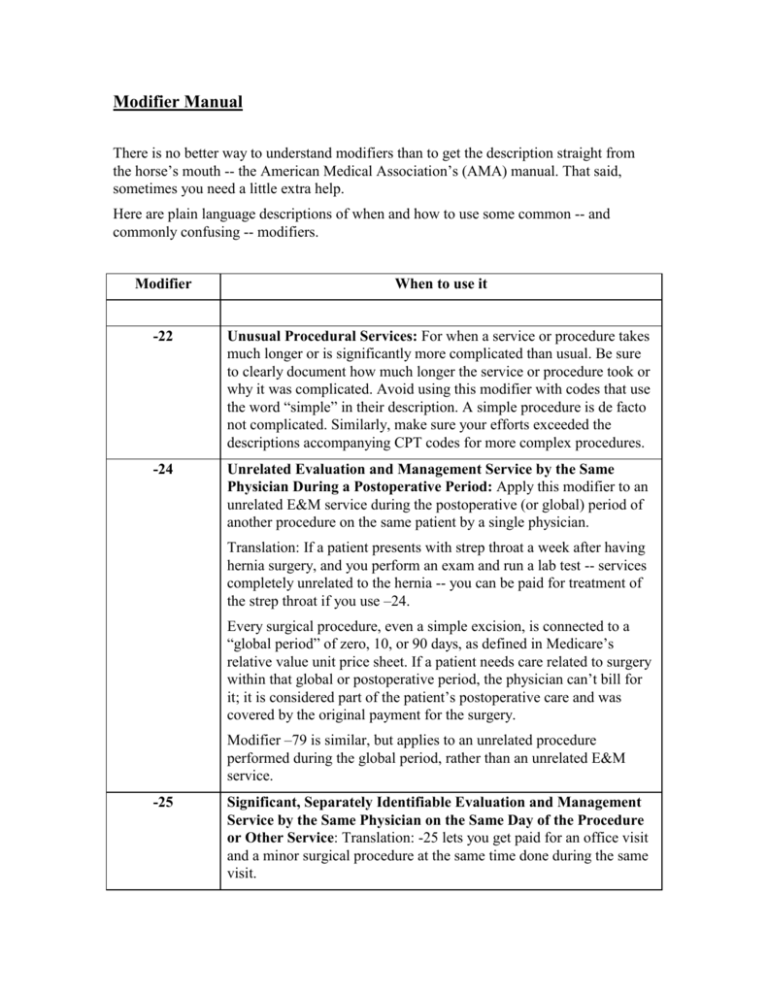
Modifier Manual
There is no better way to understand modifiers than to get the description straight from
the horse’s mouth -- the American Medical Association’s (AMA) manual. That said,
sometimes you need a little extra help.
Here are plain language descriptions of when and how to use some common -- and
commonly confusing -- modifiers.
Modifier
When to use it
-22
Unusual Procedural Services: For when a service or procedure takes
much longer or is significantly more complicated than usual. Be sure
to clearly document how much longer the service or procedure took or
why it was complicated. Avoid using this modifier with codes that use
the word “simple” in their description. A simple procedure is de facto
not complicated. Similarly, make sure your efforts exceeded the
descriptions accompanying CPT codes for more complex procedures.
-24
Unrelated Evaluation and Management Service by the Same
Physician During a Postoperative Period: Apply this modifier to an
unrelated E&M service during the postoperative (or global) period of
another procedure on the same patient by a single physician.
Translation: If a patient presents with strep throat a week after having
hernia surgery, and you perform an exam and run a lab test -- services
completely unrelated to the hernia -- you can be paid for treatment of
the strep throat if you use –24.
Every surgical procedure, even a simple excision, is connected to a
“global period” of zero, 10, or 90 days, as defined in Medicare’s
relative value unit price sheet. If a patient needs care related to surgery
within that global or postoperative period, the physician can’t bill for
it; it is considered part of the patient’s postoperative care and was
covered by the original payment for the surgery.
Modifier –79 is similar, but applies to an unrelated procedure
performed during the global period, rather than an unrelated E&M
service.
-25
Significant, Separately Identifiable Evaluation and Management
Service by the Same Physician on the Same Day of the Procedure
or Other Service: Translation: -25 lets you get paid for an office visit
and a minor surgical procedure at the same time done during the same
visit.
One example: An OB/GYN is doing a scheduled pelvic exam and
finds polyps. Rather than schedule a second appointment, the
OB/GYN takes a biopsy then and there.
Note each word of the definition. The second service must be
significant and quite separate from the first. Be sure to document
carefully.
-51
Multiple Procedures: Use this when doing multiple procedures – not
E&M services – at the same session. Add the modifier to the second
procedure (and to any thereafter) and Medicare and most other payers
will reimburse you for them at a discounted rate.
Medicare has no interest in giving physicians an incentive to schedule
patients multiple times to make sure they get paid for multiple
procedures. On the other hand, it understands that multiple procedures
mean greater efficiency -- there is only one day in the OR, only one
preoperative and postoperative period -- so it doesn’t want to pay the
full rate for each procedure. The compromise: Credit at a discount.
Typically, payers reimburse at 100 percent of fee schedule for the first
procedure, 50 percent for the second through fifth and then 25 percent
after that. List procedures in order of decreasing value for the best
payment.
There is some debate whether billing offices should bill for the full
amount of the secondary procedures, or bill the discounted rate. We
suggest billing the full rate so that you don’t risk having the payer
discount and already discounted rate. Either way, track to make sure
you are paid what you are owed.
Be aware that some CPT codes are pre-discounted and exempt from
the –51 modifier. Largely, these are procedures that are usually only
performed as part of another procedure. They are listed in full as
Appendix E in the AMA’s Current Procedural Terminology CPT
2002, Standard Edition.
-76
Repeat Procedure by Same Physician: Modifier -76 should be used
when a physician performed a service or procedure, and the same
physician had to repeat the exact same service or procedure during the
global period. The modifier would be used when coding for that
repeated procedure. It does not need to be on the same day, nor is it
limited to minor procedures.
If a different procedure is done during the global period, or even
during the same day, use –78 instead.
-77
Repeat Procedure by Another physician: This follows the same
description as modifier –76 only, for –77, the physician doing the work
is a different physician than the one who did the procedure originally.
-78
Return to the Operating Room for a Related Procedure During
the Postoperative Period: If a patient underwent an operation and is
still in the global period for that procedure, but has to return to the OR
again for a second procedure related to the first -- in other words, for
some complication -- attach –78 to the related procedure.
If the second procedure has to be done on the same day as the first, not
at some later time during the global period, and is done by the same
physician, use modifier –76 instead.
-79
Unrelated Procedure or Service by the Same physician During the
Postoperative Period: This is very similar to modifier –24, but
involves procedures, not E&M services. Use it if a patient is still under
the global period for one procedure but needs a second procedure for a
second, completely unrelated problem.
Original form provided by PhysiciansPractice.com. All rights reserved.

